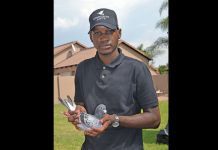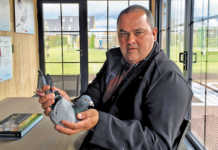Racing is silver but breeding is gold
It’s often reported that by the time a certain fancier has discovered a superior racer in this year’s team, they’ve already culled the parents because of poor past performances in the breeding loft. Too few youngsters were bred from the pair to test it properly, and the birds weren’t tested on a round-about system with different mates.
Natural selection
In matching our pigeon-racing pairs correctly to breed choice offspring, “natural selection” means allowing the pigeons to pick their own mates. As with humans, it’s believed that racing pigeons are attracted to each other based on temperament, physical features, adaptability etc. Champion fanciers often find pairs that chose their own mates produced their best racers. It would be ignorant to conclude we should adopt it as the only system of breeding. If you place 10 pairs in the same loft, the last pair will mate because it’s the only choice they have.
Human intervention
Previously we said the modern racing pigeon was bred from various fancy breeds by human selection, and we can’t step back now. Left unattended, any prize breeders or racers will think nothing of mating and breeding with birds of another species, destroying the years of work that go into breeding a superior racing pigeon.
Naturally this will only happen when one keep fancy or mixed breeds pigeons together. The same goes for superior birds mating with pigeons of inferior quality. Pigeons will also mate regardless of family relations, so that cocks mate to their own dams, sisters or daughters. There is room for such matings, but only in disciplined programmes where the entire pedigree history is screened for desirability. Indiscriminate inbreeding doesn’t preserve quality.
Ideally, specialised breeding sprinters shouldn’t be mated to long-distance champions, which would ruin both types. However, many fanciers disagree about classifying different pigeon families according to which distances they excel at. Adjust the training programme, they feel, and any pigeon will perform on any distance and all weather conditions.
But a closer study of the results sheets proves not all pigeons respond well to specific training, and those that do are the exceptions, not the rule. It took strain-makers years of intensive and pre-planned breeding to rid chosen pigeon families of weak genes and undesirable factors – we should learn the principles they used and take care not to destroy what we’ve inherited from them.
I’ve often touched on the subject of line-breeding, inbreeding and crossbreeding. The successful long-term solution advocated by champion lofts all over the world is to breed a family to your own hand and method, solely to preserving their passing-on powers by staying close to the super breeders and racers within the pedigree. Well-matched pairs “click” genetically and otherwise.
The external indication in matching is compatibility of phenotype – in other words, complementary differences. This is generally known as the contrast method of mating, and it works best if all other elements like health, quality and pedigree are aligned first











